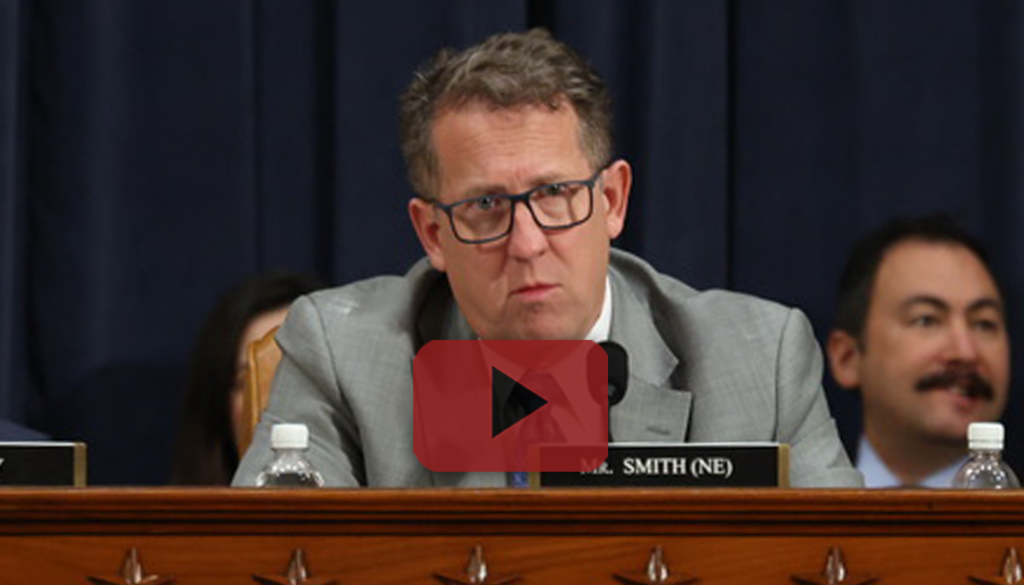WASHINGTON, D.C. – As America’s health care system is failing to address the nation’s chronic disease crisis, medical providers from across the country testified at a Ways and Means Health Subcommittee hearing about how improving care coordination provides better outcomes for patients and fragmented care contributes to medical errors, unnecessary visits, redundant or repeated services, avoidable hospitalizations, and suboptimal care. The need for coordinated care to manage chronic diseases is particularly great, given that 60 percent of Americans suffer from a chronic disease and account for 90 percent of the nation’s $4.9 trillion annual health care costs. Today, Medicare beneficiaries see 50 percent more specialists than in 2000, underscoring the need for communication and care teams. Expert witnesses discussed how Accountable Care Organizations, doctor-pharmacist collaboration, community paramedics, remote patient monitoring, and telehealth follow-up appointments are proven models of coordinated care that can be expanded and incentivized.
Republicans took targeted steps toward advancing care coordination in the working families tax cuts enacted this year by increasing reimbursements for physicians and made community paramedics eligible for resources from the newly created $50 billion Rural Health Transformation Program.
Coordinated Care Promotes Quality Over Quantity for Patient Care
Fragmented care is perpetuated by a fee-for-service system that adversely incentivizes medical practitioners to provide unnecessary, redundant services instead of focusing on improved patient health outcomes and quality. Fostering collaboration between health care providers and allowing more flexibility in care delivery can improve patient care while lowering health care costs.
Rep. Vern Buchanan (FL-16): “Fee for service, is that the way we should go, or should we be looking at alternatives?…The propensity is to move in that direction, to do more, to make more money. I’m not saying anybody’s taking advantage of it, but my point is I do think that there should be some consideration…The right incentive is treat people, treat their health, their conditions, get them better, so they don’t need to be running to the doctor every couple of weeks. What do you think?”
Dr. Michael Hoben, Chief Medical Officer of Population Health Services, Novant Health: “I think you’re right. I think there will likely always be a fee-for-service component and a value component…I think when you look at the major cost in health care, it’s really around this chronic disease management. The way we can approach that and be successful is using comprehensive care teams, top-of-license work, reducing some of that regulatory burden to make it easier; offload the providers, allow them to do their job, and create the right access points. Regardless of what the payment model looks like, if we can get patients to the right level of care at the right time, we will see cost reductions in maintaining quality, and we’ve shown that in many programs over the years, that we’ve been involved with and others here have been involved with.”
Coordinated Care Promotes Health Workforce Collaboration and Patient Access to Care
Pharmacists have among the greatest frequency of patient interactions of any type of medical provider for many Americans, particularly those living in rural communities. Pharmacist collaboration with other components of the health care team through screening, prevention, risk mitigation, and medication management can lead to better health outcomes. Heart failure patients have 75 percent reduced risk of a cardiac event when clinical pharmacists partner with cardiologists. Legislation promoting these partnerships can improve patient access to care.
Rep. Adrian Smith (NE-03): “I appreciated your reflection on your relationships with your patients. That’s pretty unique to community pharmacies. We also know that community pharmacies across the country have suffered. Many have closed, especially in rural areas. Can you expand on how the ECAPS bill [Ensuring Community Access to Pharmacist Services Act] could enhance opportunities for pharmacists to maintain practices all across the country?”
Allison Reichert, PharmD, Illinois pharmacist: “In my home state in Illinois, in 2024, we lost over 100 pharmacies. To me, that number is staggering. Legislation like ECAPS helps to preserve the care for those patients who need it most. Shifting the care from emergency rooms to community-based settings, to more accessible settings for those patients, really helps to preserve that care and helps to preserve the pharmacies in that area.”
Coordinated Care Provides First Warning Signs That Save Patients’ Lives
Patients benefiting from coordinated care receive consistent and efficient treatment across different specialties and medical providers when experiencing a medical problem. Rural patients, because they live in areas with shortages of health professionals, especially benefit from coordinated care. When bundled together, telehealth, remote patient monitoring, and pharmacists frontline care have the capacity to catch and treat a serious health issue before it escalates.
Rep. Greg Steube (FL-17): “What recommendations would you suggest to our committees to address telehealth resources to rural and lower-income individuals?”
Dr. Ashish Parikh, Chief Population Health Officer, Summit Health: “I think the first thing is to make the pandemic era expansion permanent. We need to be sure that we can use telemedicine as an access point, like we’ve all talked about, to enhance care needed for our patients, particularly in rural areas where there is a scarcity of providers. It can offer an alternative for all the things that I mentioned: for acute illness, for chronic condition management, and then for prevention of exacerbations that lead to hospitalizations. There are areas where there isn’t a hospital in a 100-mile radius. For those folks, if it can catch that heart failure early with remote patient monitoring and adjust those medications with telemedicine and consultation with the pharmacist, then you’ve saved that patient’s life, in addition to significant cost savings.“



